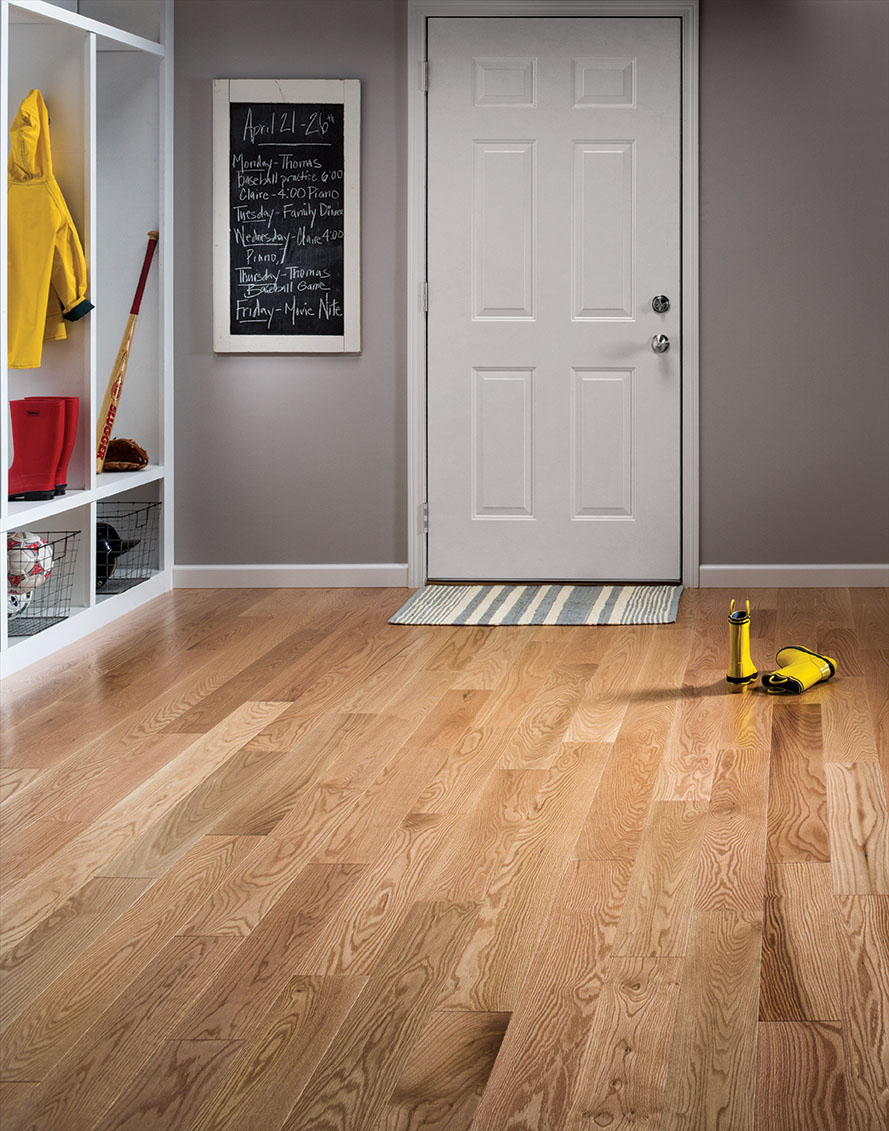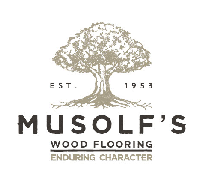
Key Differences Between Engineered vs Solid Hardwood Floors
Planning to install new flooring in your home is a fun and rewarding experience. You get to learn a lot about the different flooring options available and select one that aligns with your family’s lifestyle and your design vision. If you’ve narrowed down your options to hardwood, you might be wondering how engineered and solid hardwood are different. Is one better than the other? How do you choose between the two?
Let’s discuss the key differences between the two wood flooring types and how to determine the best fit for your home and lifestyle.
Engineered vs Solid Hardwood
- Engineered. Engineered hardwood features multiple layers of wood bound together by extreme heat and pressure and sometimes with adhesive. The layers are usually supported by Baltic birch, plywood or recycled wood fibers to improve durability and stability. The wear layer, or top layer, of an engineered product is the hardwood and will have the same look as a solid floor in the same wood species. The depth of this wear layer will be very important to the life of your floor. If you choose flooring with a wear layer of anywhere from 3mm up to 5mm you will be able to sand your floor for a longer lasting floor. If you choose flooring with a thin wear layer your floor will need to be replaced when dents and damage occur as sanding will likely go through the hardwood layer.
With an engineered product you also need to be aware of the 2 different types of wear layer: Sawn and Peeled. The Sawn option will provide more stability since it is cut exactly the same way that a solid wood floor is cut. It will also have a more natural look – the grain of the wood will look more natural. The Peeled option is just as the name implies – the wood is peeled from the log like sharpening a pencil. These products tend to be inexpensive, unstable, prone to face checking and will be a short term answer to your flooring needs. In addition, the Peeled veneer has a more open and stretched out looking grain than the Sawn cut.
Engineered hardwood flooring can be purchased as prefinished or unfinished.
- Solid. Solid hardwood flooring is made from a single piece of hardwood. A solid wood floor can last you a lifetime since there is the possibility for multiple sandings. Solid wood can be purchased in prefinished or unfinished planks.
Choosing the Best Wood Floor for Your Home
Now that you know the subtle differences between engineered and solid wood planks, let’s talk about how you can choose the best one for your household. Here are some key factors to pay attention to.
- Expanding/contracting. Solid wood planks expand and contract more because they are made from a single piece of wood. To prevent warping, your home’s humidity will need to be controlled. A wider wood floor plank (5” or wider) will expand and contract more, so if you choose to go with a wide wood floor plank you will need to be more vigilant with the humidity controls in your home and your installation options may change. Engineered wood is produced so it’s not as effected by humidity
- Installation. Solid hardwood is most often nailed into the subfloor. For this reason, it should be installed in above-grade rooms and over plywood. Engineered wood is often installed as a floating floor, which means it can be installed in below-grade rooms like basements.
- Design options. In both the solid hardwood and engineered there is the option for a prefinished floor or site finished.
The prefinished option may be what you need for a remodel since the floor will go in with less disruption to your daily life. You will however, limit your choices to the species and the finish that the manufacturer produces. That said, there are many beautiful choices for prefinished flooring. In almost all prefinished floors you will see a micro-bevel on the edge. This is a v-groove between boards that allows for very minimal height differences to occur. In a site finished floor this would be sanded smooth so there would be no differences in height from board to board.
If you choose the site finish option you will have unlimited options. You choose the wood species, the stain, the texture and the finish. This is the best option for new construction or if you have specific design restrictions in mind.
There is no “one size fits all” solution. It comes down to where you are installing the floor, your design plan and your project’s budget. You should discuss the best options for your project with your flooring installer – they are the experts and their recommendation should be carefully considered. Both solid wood and engineered wood planks will enhance the look of your home, increase its value and be easy to care for as long as they are installed and maintained properly.
Check back next month for more wood flooring information! We appreciate you visiting our blog and website!
Disclaimer:
The information presented on musolfs.com is compiled from reliable sources.
That said, as a consumer, your main source of information regarding your hardwood floor should be your professional flooring installer.
Each home and installation project is unique and comes with its own set of considerations.
We are happy to present general information and tips here and hope that you find this helpful.
